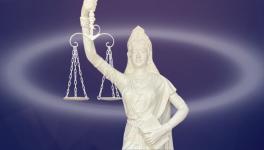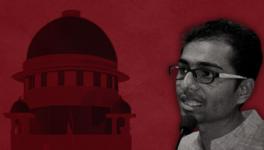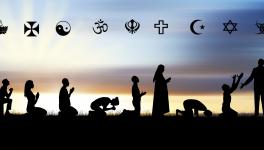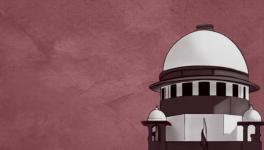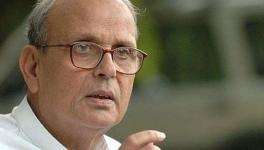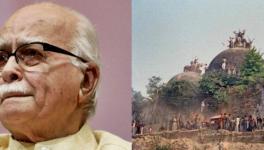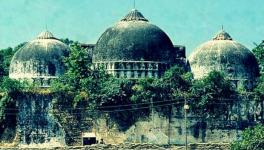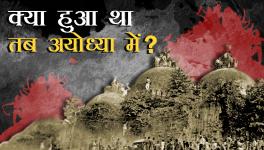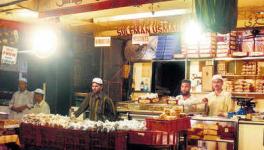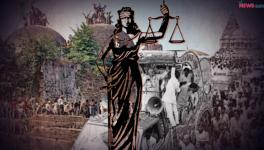Babri Masjid: Journalists as Witnesses in the Demolition Case
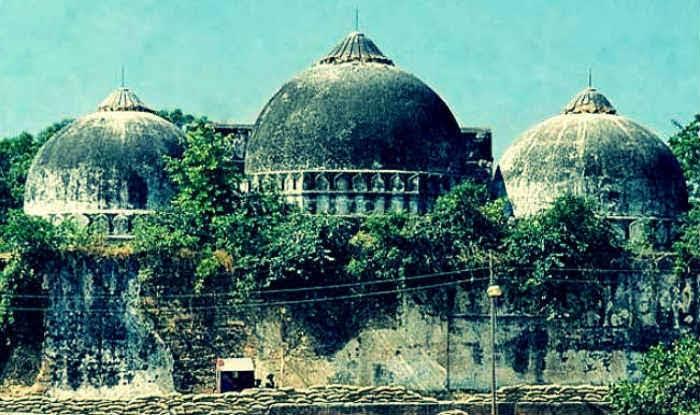
Sir William Mark Tully broke the story of the Babri masjid’s demolition. He arrived in Ayodhya on the morning of 6 December to report on the events for the BBC World Service. Like most journalists, he initially trusted the assurances given by the top brass of the Bharatiya Janata Party to the Supreme Court that no harm would come to the mosque. Therefore, he had expected to witness just another round of shilanyas.
Yet on the morning of 6 December Tully was surprised to see large groups of sloganeering men wearing saffron bands aggressively march towards the mosque. He recalls three police cordons in the area around the mosque, but the policemen deployed in them never tried to control the swarming crowds.
Tully quickly realised that the mosque was going to be broken. He slipped off to Faizabad from where he broke the story, using the telephone at the post office to call his office in London. Then he returned to Ayodhya for a first-hand take. It turned out that he was right—he saw the mosque being dismantled brick by brick.
Twenty six years after that day, the Central Bureau of Intelligence (CBI) contacted Tully to depose as a prosecution witness before the court of the special judge at the Old High Court Building at Kesar Bagh in Lucknow. The court was examining whether a criminal conspiracy had paved the way for this demolition.
Tully recounted what he had witnessed before the district judge, SK Yadav. However, his evidence was challenged by the defence lawyer representing the accused. “He kept insisting that I was not present at the site,” Tully told NewsClick. “His questions were ridiculous,” he says. “He asked me, did I have a copy of the bill of the hotel in which I had stayed, did I have the phone number of that hotel. I told the judge, how do you expect me to answer these stupid questions? All that happened 26 years ago,” he says.
Tully recollects the judge smiling at this point.
As is well known, the accused in this case include BJP stalwarts such as Advani, Uma Bharti and Manohar Joshi and numerous others.
Tully was not exasperated alone. Twenty six years ago, ace photographer Praveen Jain was working for The Pioneer newspaper. He arrived in Ayodhya on the night of 4 October 1991, to find lakhs of kar sevaks already gathered there. On the evening of 5 October, Jain saw them carry hammers, pick-axes and crowbars to a ‘rehearsal’ in of exactly how they demolish the mosque.
“Masked men were orchestrating this entire exercise and I could make out it was a well-organised event because the masjid was a strong edifice and could not be brought down without prior preparation and detailed supervision,” Jain tells NewsClick.
On 6 December, Jain arrived early in the morning at the site of the mosque, and a group of Hindu worshippers attacked him on the spot. He hid his camera under his jacket and tried to get closer to the masjid. He was attacked yet again. Then he saw kar sevaks climb atop the mosque. His worst fears about the demolition come true, he says.
Jain has photographed revelatory photographs of the scene that unfolded on the morning of 6 December. To recollect just one, he has clicked a policeman carrying a Sten gun, his arm raised in salute, in solidarity with the kar sevaks. Jain also heard him shout “Jai Shri Ram”, the war cry of the zealots who tore down the mosque on that day.
On 7 December, the media was not allowed to enter the site of the demolition, but Jain got there anyway, disguised as a kar sevak “Only a trained and technically-literate force could have brought down this huge dome. It was humbling to see this huge monument reduced to rubble,” he says.
Jain saw the event that changed India unfold before his eyes, but that was not all. Like Tully, he got to see the numerous and exasperating ups and downs in the court case as well. In the last decade, he has appeared at least ten times before the court in Lucknow to give testimony of what he witnessed. Again, it is the CBI which asked him to deliver his account. “It was a clear case of criminal conspiracy and my pictures prove that,” he says.
Despite the photographs and his statements, and those of numerous other journalists, the defence counsel representing the accused political leaders and activists kept trying to prove his pictures unreliable. “They kept saying that my photographs were taken months before the demolition. Those days there were no digital cameras and every picture had a negative also [as proof]. They would ask me to show them the ticket by which I travelled from Delhi to Lucknow and then Faizabad. Or to provide details of the place where I had stayed. Are they stupid or what? All these things had happened 25 years ago,” Jain says.
Advani has made repeated claims that he opposed the demolition of the Babri masjid. Yet, senior journalist Renu Mittal has deposed before the Rae Bareli court (the case has now been moved to Lucknow, clubbed with other criminal conspiracy cases) that he played an important role in the demolition. She made this statement on the morning of 17 November, 2011.
At the time of the demolition, Mittal was working for Mumbai-based Onlooker magazine. She has testified before the court more than a dozen times so far, where she has said that it is Advani who used loudspeakers to direct all routes to Ayodhya to be closed, so that nobody could enter or leave. She has also said that Advani kept saying that the “kar seva” should continue until a Ram temple has been constructed [in place of the Babri masjid].
Mittal is also a prosecution witness of the CBI. She recalls to NewsClick that she had informed then special judge Vishnu Prasad that no BJP leader had tried to stop the kar sevaks from destroying the mosque.
Despite the roadblocks, Mittal had reached the Babri masjid complex at 8 AM on 6 December 1992. There she had the opportunity to speak with Ashok Singhal, the Vishwa Hindu Parishad (VHP) chief at the time.
At around 10:30 AM, the mosque complex was swarming with kar sevaks. They were led by Advani, Murli Manohar Joshi, Ashok Singhal, Vinay Katiyar and Shiv Sena Member of Parliament, Moreshwar Save. Mittal recounts that a day earlier, Save had said—at a press conference, no less—that he would not rest till the destruction of the Babri masjid.
Mittal told the court all this, and also that inflammatory speeches were being made from a dais, so as to inflame the gathered kar sevaks. They were expressly enjoined to finish the task for which they had come to Ayodhya. She also witnessed kar sevaks thrashing up journalists and destroying their recording equipment and cameras. “When I tried to save a cameraman, a kar sevak threatened me, pointing a knife to my abdomen. He asked me to leave. Kar sevaks were attacking journalists. It appeared that they did not want to leave any proof of their crime,” she says.
Mittal also recalls hearing Sadhvi Rithambara, the founder of Durga Vahini, a militant outfit, and Uma Bharti, a former chief minister and BJP leader, repeatedly incite people to bring the mosque down. In 1991, while these events were unfolding, she had asked a police officer why they were not controlling the crowds. She says he told her that then chief minister Kalyan Singh has issued strict orders not to raise an eye towards the kar sevaks—the question of firing a bullet at them did not arise.
After the demolition, it was party-time for the assembled leaders. People hugged and congratulated each other at the site. Everybody saw kar sevaks take away the bricks of the demolished mosque as souvenirs.
“I have been to Rae Bareli and Lucknow more than twelve times. The special judge in Rae Bareli kept adjourning the case. The defence had hired a battery of lawyers who kept picking holes in my story. They insisted that I had not been present. They wanted to prove me a liar and that the piece published in Onlooker was not written by me. It was very frustrating, especially since one wasted much time going there only to find the case adjourned,” Mittal says.
The police had done little to stop the marauding mobs but it wasted no time in filing FIRs after the demolition. The very first FIR, number 197/92, filed against unknown kar sevaks, was registered within minutes of the mosque collapsing. The second FIR was filed ten minutes later, against a battery of BJP and VHP leaders including Vishnu Dalmiya and Sadhvi Rithambara, for making provocative speeches that instigated the crowds. Another 47 FIRs were registered in coming days for offences including the assaults on media-persons. All were filed at Ayodhya’s Ramjanmaboomi police station.
In 1992, all these charges were consolidated by the CBI into a single charge-sheet, and then a supplementary charge-sheet was filed against the BJP and VHP leaders, which narrated the demolition as the result of a larger criminal conspiracy.
The case was already proceeding sluggishly through the legal system and yet on 12 February 2001, almost ten years later, the Allahabad High Court ordered the criminal conspiracy charges against leaders including Advani, Joshi, Bharti and Kalyan Singh be dropped, thereby weakening the CBI’s case even more.
To add to the confusion, the Lucknow special court bifurcated the first two FIRs. While 21 accused would be tried in Rae Bareli, the remaining 27 would be tried in Lucknow. Therefore, until 2010, the witnesses would trudge to two separate courts. In 2011, the CBI approached the Supreme Court, which now said that the trial would take place only in Lucknow, and the cases were clubbed.
For the next seven years, several review petitions were filed in the courts against the charges framed by the CBI. Finally, on 19 April 2017, the Supreme Court ordered the case be heard on a day-to-day basis. And, Advani and the others were brought back into the criminal conspiracy case.
It is no wonder that the witnesses complain that the case is proceeding at a snail’s pace. Several accused, including Singhal, Bal Thackeray, Giriraj Kishore, have died. As well, of the 300 witnesses who have been questioned, 50 have died.
Senior journalist Debashish Mukherjee who was working for The Week magazine at the time, believes these delays have taken the sting out of the case. “I have been going to give my testimony both in Rae Bareli and Lucknow,” Mukherjee says. He says he and his colleagues were harassed by the defence lawyers. They keep insisting that he was simply not present at the site of the demolition, even though his published articles provide conclusive proof of his presence.
“The thrust of the defence lawyers’ argument was that I had cooked up the story. They wanted me to give the name of the taxi stand from where I had hired the taxi that took me to Ayodhya and other such details, as though one can remember details like these so many years after the event,” Mukherjee says.
Testimonies of journalists is one of the main pillars of the CBI’s case, the other being the accounts of policemen present during the demolition. Certainly, the journalists’ published works should carry weight, but the delays in the case have caused nothing but harassment.
On 9 November, the Supreme Court called the demolition of the Babri masjid a crime that shook “the secular fabric of the Constitution”. If found guilty, the crime entails a punishment of two to five years imprisonment. Even the Uttar Pradesh government has indicated that the hearings for this case will conclude by mid-2020. Whether the accused receive any punishment after all these years is an altogether different matter.
Rashme Sehgal is an independent journalist. The views are personal.
Get the latest reports & analysis with people's perspective on Protests, movements & deep analytical videos, discussions of the current affairs in your Telegram app. Subscribe to NewsClick's Telegram channel & get Real-Time updates on stories, as they get published on our website.









